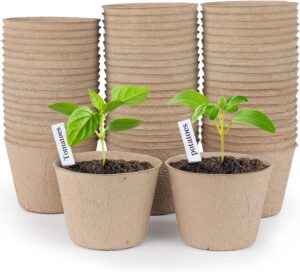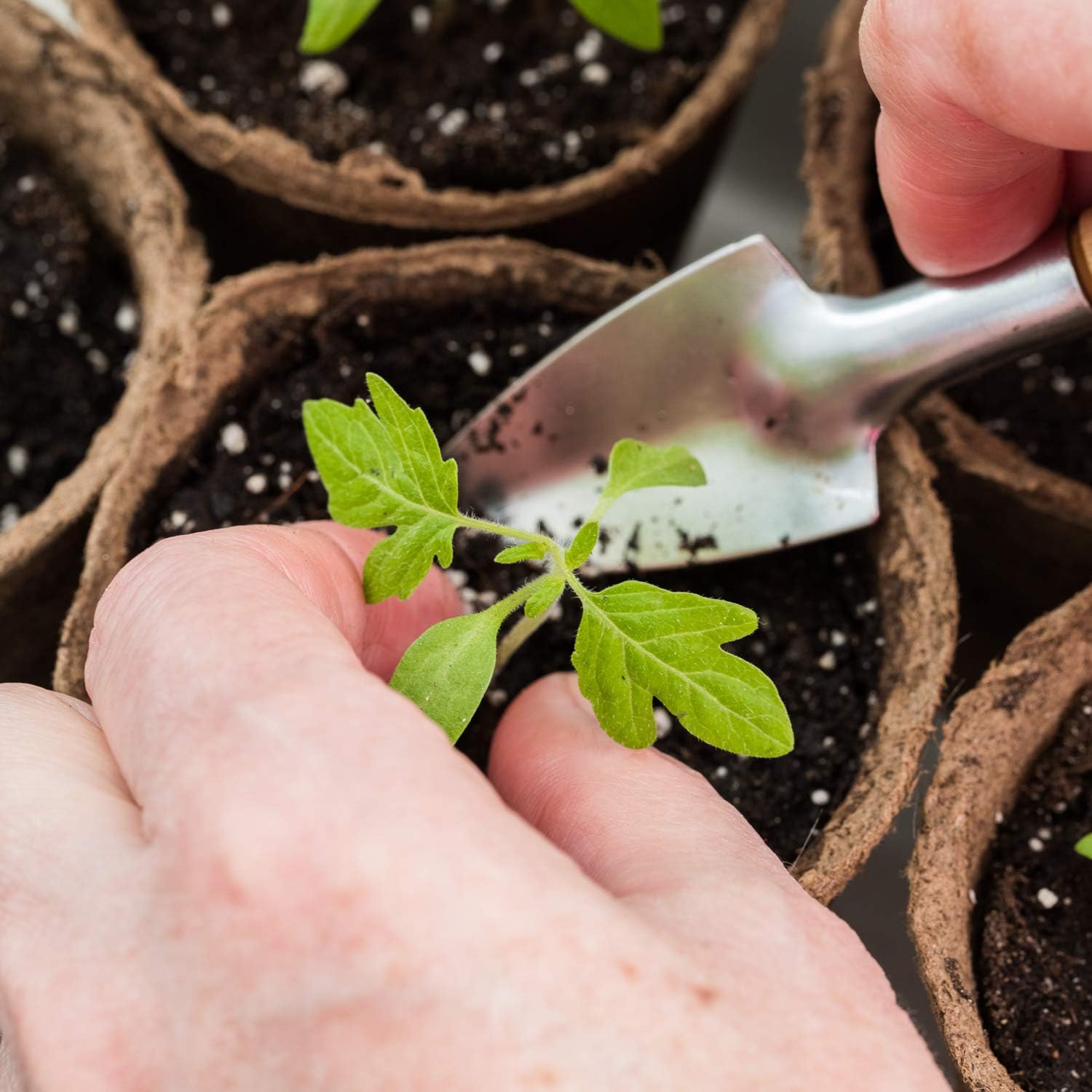If you’re an avid gardener like me, you understand the importance of starting seeds off on the right foot. The Homenote Peat Pots, with their promise of being eco-friendly and efficient, caught my attention as the ideal choice for nurturing young seedlings. After testing out these seed starting pots with drainage holes and bonus plant labels, I am eager to share my experience, including the pros and cons.

What Are Peat Pots?
Peat pots, also known as peat pellets, peat cups, or peat cells, are small plant pots made from compressed peat moss and sometimes other organic materials. They are commonly used in gardening for starting seeds and nurturing young seedlings before transplanting them into the ground or larger containers.
The peat used in these pots is derived from peat bogs or wetlands. Peat moss is a partially decomposed organic material made up of mosses and other plant matter that accumulate in waterlogged environments over thousands of years. It has excellent water retention properties, making it ideal for seed starting and providing a good environment for the initial growth of seedlings.
Here’s how peat pots typically work
- Compressed Form: Peat pots are sold in a compressed form, which means they are flat discs or small cubes. When water is added, the peat expands and swells into a three-dimensional pot shape.
- Seed Starting: Gardeners place seeds in the center of each expanded peat pot and gently cover them with a bit of soil. The peat pot acts as a small individual container for the seed.
- Transplantation: As the seedlings grow and develop, their roots penetrate the walls of the peat pot. When it’s time to transplant the seedlings outdoors or into larger pots, the entire peat pot can be planted directly into the soil. The peat pot gradually breaks down over time, and the roots can grow freely into the surrounding soil.
Benefits of Peat Pots
- Reduced Transplant Shock: Transplanting seedlings from peat pots is less disruptive to their root systems, as the peat pot is planted directly into the soil. This reduces transplant shock, which can be common when removing seedlings from traditional plastic pots.
- Eco-Friendly Option: Peat pots are considered more environmentally friendly than plastic pots because they are made from natural, biodegradable materials. They break down over time and contribute to composting and soil enrichment.
- Water Retention: The peat moss material retains moisture well, helping to keep the soil around the seedlings consistently moist, which is crucial for successful germination and early growth.
However, it’s essential to be aware of some considerations:
- Sourcing Concerns: Peat moss extraction can have environmental impacts on delicate ecosystems like peatlands, which are vital for carbon sequestration and biodiversity. Sustainable sourcing practices are critical to minimize these impacts.
- Limited Reusability: Peat pots are typically for single-use only, unlike plastic pots that can be reused multiple times. However, as they biodegrade, they contribute to the soil’s organic matter.
Pros
- Eco-Friendly Material: The Homenote Peat Pots are made from biodegradable peat, which is an eco-friendly alternative to plastic pots. These pots can be transplanted directly into the soil without disturbing the roots, reducing transplant shock and minimizing waste.
- Adequate Drainage: The presence of drainage holes in the pots ensures proper water drainage, preventing overwatering and the risk of root rot. The balance between retaining moisture and allowing excess water to escape promotes healthy root development.
- Easy Seedling Transplantation: The peat pots’ biodegradable nature makes it effortless to transplant seedlings into larger containers or directly into the ground. The roots can grow through the pot walls, eliminating the need for seedling removal and reducing transplant stress.
- Bonus Plant Labels: The inclusion of 20 bonus plant labels is a thoughtful addition. They come in handy for labeling different plant varieties and maintaining organized gardening records, helping to keep track of your seedlings as they grow.
- Sturdy Construction: Despite being biodegradable, the peat pots exhibit sturdy construction during the seed starting process. They hold their shape well and don’t disintegrate prematurely, providing reliable support to delicate seedlings.
Cons
- Limited Reusability: While the eco-friendly nature of peat pots is commendable, they are not as durable as traditional plastic pots. Once the seedlings have outgrown the pots, they cannot be reused for subsequent plantings. Gardeners may consider recycling them or composting them to ensure minimal environmental impact.
- Vulnerability to Drying Out: Due to their porous nature, peat pots may have a higher tendency to dry out compared to plastic pots. Gardeners need to be vigilant in maintaining adequate moisture levels, especially in dry or arid climates.
- Mold Growth: In some instances, the moisture-retaining properties of peat pots may lead to mold growth on the surface. Proper ventilation and avoiding overwatering can help prevent this issue.
Conclusion
The Homenote Peat Pots offer an eco-friendly and practical solution for starting seeds and nurturing young seedlings. Their biodegradable material and drainage holes ensure healthy root development and seamless transplantations, while the bonus plant labels aid in maintaining an organized gardening system.
Although the peat pots have limitations in terms of reusability and may require extra attention to prevent drying out or mold growth, these concerns are outweighed by their environmental benefits and overall effectiveness in supporting the early stages of plant growth.
For gardeners looking to reduce their plastic waste footprint and seeking an efficient way to start seeds, the Homenote Peat Pots are a solid investment. With their green ethos and practical features, these seed starting pots can help you kickstart your gardening journey with care and sustainability.

